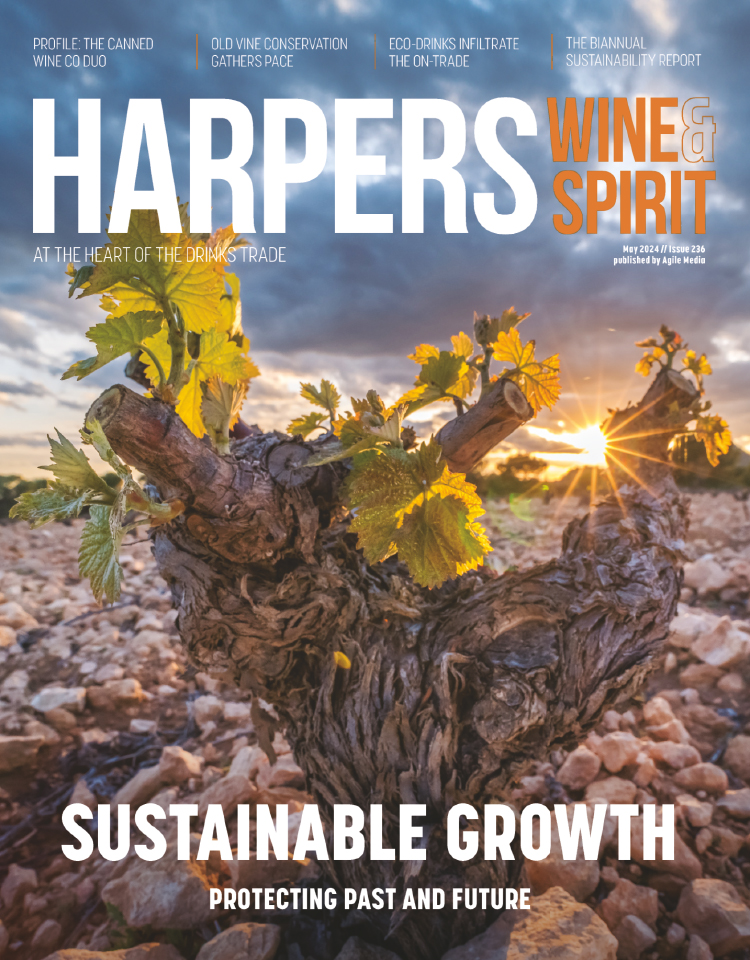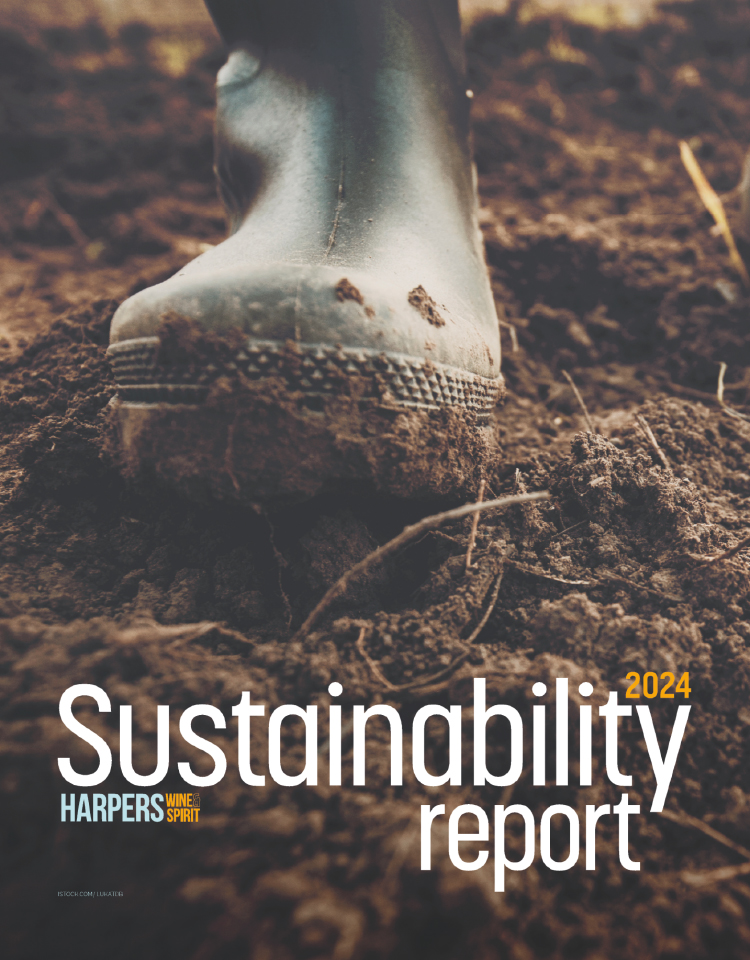
Jerry Lockspeiser: Alcohol tax, inequality and 40p wine
Everyone in the UK trade will be acutely aware that the new duty system comes into effect on 1 August, making most wine more expensive and all of it much more complex to administer. The negative effects will be exacerbated on 1 February 2025, when the tax banding will be divided further into an extraordinary 27 different segments, with some going up and some going down.
In the meantime, sparkling wine comes down in price to the same as still wine, a move perhaps intended to help UK producers. Given UK sparklers are close to mainstream Champagne in price, the relatively small reduction in tax is likely to have little effect on their competitiveness. On the other hand, it will help cheaper imported wines like Prosecco and Cava for whom maintaining or even reducing their retail price points is crucial to their sales. If the duty reduction is intended to assist local sparkling wine producers against foreign competition, it looks set to backfire spectacularly.
The alcohol reform is burdensome to the trade, but equally so to consumers. It is another example of the government punishing the less well off. Those who have the means to maintain their lifestyle despite high inflation will not be troubled by a 53p a bottle tax increase (duty and VAT on the duty). Those who are already struggling to afford the simplest pleasures will take it as another punch in the gut. Welcome to inequality Britain.
- Read more: HMRC downplays wine duty pain
In this context, Nielsen’s report that in 2022, only 4% of wine in the UK retailed above £10 is significant. The true percentage is no doubt a little higher. Nielsen’s figures are based on sales in big retailers rather than the country’s 1,000 or so independents where a bigger proportion of wines are sold above £10, but their volumes are a small percentage of the total. The £10 ceiling means the drinkers hit hardest by the alcohol tax reform are those who can least afford to pay.
Gavin Quinney of Chateau Bauduc has published a comprehensive report on the alcohol tax reform on his website. I have taken some of the points below from it (with thanks for an excellent piece).
The average price of a bottle of wine in UK retail is below £6.70. Quinney estimates that with the new duty rates, 70% of the cost of a £5 bottle will be tax (duty and VAT), with only around 40p for the wine itself. At £8, the figures are 50% tax and 90p for the wine, and at £10 its 43% tax and £1.86 for the wine. The higher the price, the greater the share of the wine in the total cost.
Handing over 4.5 times more for wine at £10 than at £5 – £1.86 against 40p – might create expectation of an exponentially better-quality drink. Taste being personal, there is no linear connection here. Yet the tax system clearly disadvantages those who can only afford to buy cheaper wines from getting a drink of pro rata quality with those buying at higher prices. The less well-off are punished again.
The new 1 August duty rates put the UK alongside Sweden and Ireland with the highest tax per bottle of wine in Europe; and light years ahead of everyone else for the total amount of tax raised for the government through wine sales. Because there are more of us drinking more of the stuff and the tax per bottle is high, we account for 66% of all the wine tax raised for governments in Europe. And in a change from the past, wine now raises more tax in the UK than either beer or spirits.
The economy and the market
A recent Economist article titled ‘The World Economy is still in danger’ nods to some positive trends, including headline inflation in the USA being down to 3%, but highlights the world economy continuing to slow down. There is still a way to go before it is out of the woods, it cautions, observing that many economists expect the last mile to be the hardest. Then there is the economy that is the ‘troubling outlier’. That’s us, here… in the UK.
So, we need to be super smart in our business approach, expecting the unexpected and avoiding the thought that if things pick up a little this year, they should be back to normal by early next. The climate crisis looks to ensure there won’t be such a thing as ‘normal’ for long into the future. The consequences of Brexit, the war in Ukraine, the cost-of-living crisis, and now the duty hike are all setting the scene.
Against the gloom, we may take courage from one of Quinney’s charts showing that despite all the press about declining wine volumes, the number of bottles cleared by UK customs has been around 1,750 million annually for the last 15 years. If that trend were to continue, despite all the difficulties, we should have something to work with. The devil, of course, is in the detail.
Interpretation
The Royal Society for Arts, Manufactures and Commerce (known today as the RSA) was formed in 1754 by eleven professional men who pooled their subscription funds to do things for the public good. It has evolved with the times and today, under CEO Andy Haldane, previously chief economist at the Bank of England, includes in its activity the theme ‘what could go right?’ Their purpose is to find innovative solutions that address the issues of today’s world.
Applying ‘what could go right?’ to our trade seems a positive, creative and morale enhancing approach.
There are genuine signs that consumers are increasingly favouring sustainable, ethical and environmentally responsible products. The Soil Association’s Organic Market Report shows that organic food and drink has grown at three times the rate of non-organic over the past eight years. Other data suggests an ethical purchasing decline during a cost-of-living crisis, as people carefully manage their budgets. So, this trend is great news.
The availability of good volumes of relatively inexpensive bulk wine from countries including Australia, also allows new opportunities for those entrepreneurial enough to invest in brand and product creation.
The new duty system invites producers and brand creators to adapt existing products, and create new ones, at lower alcohol levels and thus lower duty rates to retain or target a competitively lower retail price.
Similarly, it pushes the wine trade to recognise (if we don’t already) that our competition is not only our immediate neighbour in the wine aisle, but all alcoholic drinks around our product price point, drinking style, occasion or brand appeal – which is an unambiguously good thing.
If I had to choose a single take away from reading around current issues – and seeking solutions – it is a reminder that one size does not fit all. There is no such thing as ‘the wine consumer’. There are millions of different individuals who drink wine, usually as part of a wide repertoire of drinks.
They may share age groups and locations, likes and dislikes, behaviours and interests. But they are not easily classifiable into neat wine drinking categories, which gives us a kaleidoscope of opportunities to create and communicate about our products. Perhaps, a good starting point is to decide what we stand for and proudly shout about it through our wines.
Jerry Lockspeiser donates his fee for this column to The Running Charity who work with homeless young people in the UK.









